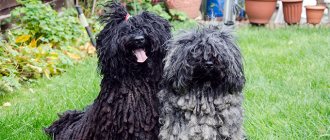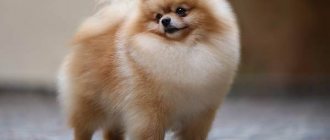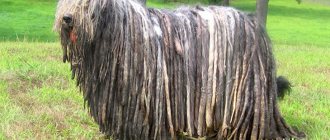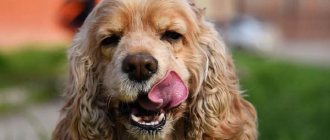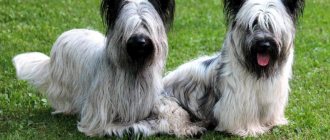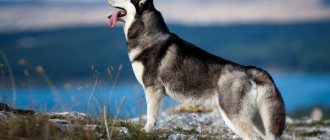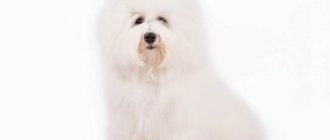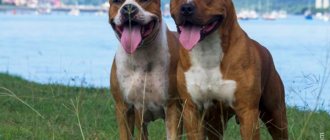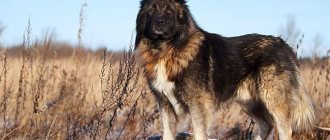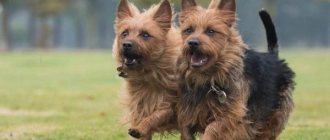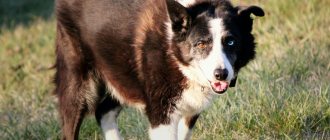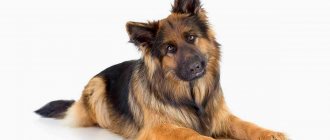The myth that a dog must be fluffy has long been debunked. Hairless pets are popular due to their uniqueness and hypoallergenicity. They are no worse than animals with fur, do not shed and are much better adapted to very hot weather. Hairless dogs are ideal pets for various hot countries, where the pet's climate allows them to tolerate persistent heat without problems. To understand the features and advantages of hairless dog breeds, we offer you an article that we developed together with breeders and dog handlers.
American Hairless Terrier
A very rare breed with a specific set of external characteristics. Its representative belongs to the group of rat hunters. The American Hairless Terrier is an excellent watchdog, hunter and friend. He was born by chance. Breeders believe that the reason for this was a gene mutation in terrier puppies, whose parents were crossed in the 70s.
When the breeders discovered puppies without fur in the litter, their joy knew no bounds. This dog has a wonderful character. He is sweet and friendly and gets along well with different people. Prefers to be friends with animals rather than compete with them. He can establish a friendly relationship with a cat, but not with a rodent, since this is the main object of his hunt.
Breed standard:
- Height – from 27 to 45 cm.
- Weight – from 5 to 7 kg.
- Rectangular muscular torso.
- Slender long legs.
- Thin hanging tail.
- Triangular large ears sticking up.
- Color – spotted. Most often, the brown body of the animal has beige spots on the back, belly and head.
The American Hairless Terrier is a hairless dog with well-developed hunting instincts. She is energetic, very emotional, active. Hates boredom. I'm ready to devote the whole day to games. Loving and devoted.
Temperament
Xolo has a peculiar disposition and a reserved character. The puppies are active, stocky, thick-legged, covered with numerous folds of skin, they have dull muzzles and sharp eyes.
Loading …
These kids have a lot of energy, they eat great, and soon turn into beautiful, proud dogs that attract everyone's attention.
They are cute, playful, kind, and are constantly in the spotlight because of their unusual appearance, decency, and openness in communication, both with adults and children. The dog carefully watches the stranger, but after a few minutes it will still approach him in order to get to know him better and gain trust.
Unfortunately, this breed is not suitable for home guarding, but if the owner is in danger, the Xolo will warn him about it with his barking.
An adult dog can be called sanguine; it has an excellent nervous system - it is a calm, fairly intelligent animal. If he is left indoors, the furniture will remain untouched and the neighbors will not suffer from the annoying howling of the pet.
During puberty, males of this breed try to dominate, but if the animal lives with a new owner for a year, it will submit and accept him as the leader. When a Xolo lives in a large family, he treats all members with respect, but still pays more attention and respect to one person and follows him everywhere.
If there are other animals, then they become the dog’s faithful friends. Dogs of this breed have a highly developed herd instinct, that is, all domestic animals are a pack, and the Xolo is its leader. Having met a cat or another breed of dog on a walk, he will easily make friends with them, without seeing them as enemies.
The advantages of the crested dog: hearing acuity, loyalty and attentiveness. Miniature dogs with a small crest on their heads will happily accompany their owner, no matter where he goes.
Such devotion is not obsessive; if the owner is not in the mood to play, the animal will feel this and do something else or simply lie down.
Amazing sensitivity and restraint help in understanding a person. Dogs treat all family members with equal love, love children, and are not touchy.
The owner of the animal should not forget that a constant and tense environment, scandals, squabbles and quarrels will negatively affect the character of the pet.
The animal will become nervous and timid. If there are birds, cats or another dog in the house, the Xolo will not quarrel with them or share territory, but on the contrary will show care, love and attention.
Chinese Crested Dog
This is a very ancient Chinese breed of hairless dog , which appeared more than 2500 years ago. All over the world it is treated as exotic. In Ancient China it was considered sacred. People believed that the owners of such dogs were blessed by the Lord himself. She has a pleasant character. Not aggressive at all. He is sensitive and understanding.
The hairless dog with a tuft is artistic and charming. She loves attention, but at the same time, she extremely rarely obsessively begs for people's favor. She stays warm only with those who openly express their sympathy for her. Rude people irritate a slightly proud dog, so she tries to avoid them.
Breed standard:
- Height – from 27 to 33 cm.
- Weight – from 5 to 6.5 kg.
- The coat is on the head, ears and tips of the paws. It is extremely rare for Chinese Cresteds to be born with fur on their back or chest.
- Harmonious physique.
- Thin long tail.
- The color varies, from pure white to black with spots.
There are 2 types of Chinese Crested breed - downy and hairless. Individuals of the second pita are more sensitive to cold, since they have fur only on some parts of the body. Their skin should be cared for regularly. She shouldn't get sunburned. The “puff” also needs to be looked after. Bald areas on her body should be treated with sunscreen in hot weather.
Note to Chinese Crested owners! These charming and beautiful dogs are very sensual and gentle. They are in great need of human care and love, so they should not be ignored or left alone for a long time.
Breed Features
According to one popular theory, these animals lost their fur due to simple uselessness, as they lived in a very hot tropical climate. Hairless dogs have very sensitive skin, so it requires special care. It must be protected from the sun and cold weather.
Animals without hair often have dry skin that may even crack. They are not recommended to walk in the sun for a long time, and for winter they should purchase special shoes and clothing. The hot sun can cause real burns on the skin of dogs without fur, so dogs without hair have to buy sunscreen. The need to purchase special shoes is due to rapid injury to the paw pads.
Clothes for hairless pets should be made from natural fibers, as they may be allergic to synthetics.
Note! Allergies in dogs without fur can appear to almost everything: from ordinary cream on the owner’s hands to dust in the room.
The skin of hairless dogs is a real indicator of their health. The better the owner takes care of his pet, the better he looks. Despite the tendency to various allergies, most of these creatures have excellent immunity. These dogs are not afraid of various diseases, but only if they undergo regular examinations and have been vaccinated.
Some hairless breeds do not have a pair of molars. This makes feeding and proper oral care a little more difficult, since they not only have to grind the food, but also divide it into small portions. In addition, it is worth paying attention to special strengthening of the jaw.
Hairless Deerhound
The dog appeared by chance as a result of a gene mutation in Scottish greyhounds. That is why it was not recognized by any dog handlers association. The cause of Scottish greyhound puppies losing their fur is a recessive gene that mutates in them at about 3 weeks.
It cannot be said that this is due to their diseases or pathologies of their parents, however, professional breeders of greyhound dogs cull such individuals from the litter. But there were enthusiasts who began to breed them. The Hairless Deerhound cannot hunt like its cousin, the Scottish Greyhound.
The reason is the lack of insulating and protective fur. The dog gets badly sunburned. Moreover, branches and sharp stones that she may come into contact with while hunting can seriously damage her delicate skin. Therefore, as a hunter, this large hairless dog is completely useless.
Breed standard:
- Height at withers – 60-70 cm.
- Weight – up to 35 kg.
- Body type – dryish, lean.
- Limbs – long, slender.
- The tail is thin.
- Skin color – gray, light brown.
The naked deerhound has one more significant drawback - poor health. However, the dog has a wonderful character. He is good-natured, non-conflicting, sociable and gentle. Strives to be friends with everyone. Loves affection and shows it independently. That is why it is valued not only in Scotland, but also in England, where greyhound hunters are revered.
Interesting! It is impossible to buy a hairless deerhound. Scottish greyhound puppies found to have a recessive gene are abandoned in kennels.
How to choose a puppy
Choosing a hairless puppy is often difficult because in one litter there are both hairless individuals and vice versa. This is normal, since each variety has certain characteristics. For example, Americans are always born with little fur, but after a couple of months they become hairless.
When choosing a Mexican, it is important to take into account that the best hairless puppy is the one with short legs, a blunt muzzle and skin with many folds. He will gradually become a confident dog with a graceful posture.
A puppy should be taken away from its mother only after it has been vaccinated and acquired important socialization skills. A puppy is usually adopted when it is about three months old. During the purchase, you need to carefully examine the baby. He must have a normal bite.
What you definitely shouldn't buy is a weak puppy. He may soon develop diseases, in particular hereditary ones. It is best to buy from a nursery with a good reputation.
Note! When choosing a pet in a nursery, you should definitely look at the type of litter: the babies and their mother, as well as the place where they are kept, must be fairly clean.
Xoloitzcuintle
The second name of the breed is the Mexican Hairless Dog. Its history is full of mysteries and secrets, but it is known for sure that the Aztecs owned this unusual dog and even used it for their rituals.
Interesting fact! The tribes of the ancient world believed that the hairless Xoloitzcuintle dog breed was created by God to transport the souls of murdered people to the world of the dead.
Breed standard:
- Height at withers – 45-58 cm.
- Weight – 12-18 kg.
- Slim build.
- Small head, large ears, expressive eyes.
- An elongated muzzle, a large dark nose, triangular ears sticking up.
- Skin color is dark brown. There may be several light spots on the dog's chest.
- There may be sparse fur on the top of the head.
The Xoloitzcuintle is one of the ugliest dogs in the world. But, as they say, there is no arguing about tastes. Yes, its unusual appearance can be repulsive, but this animal has a huge number of advantages.
First of all, it's very smart. The intellectual abilities of such pets always amaze their owners. It seems that such a dog understands its owner perfectly. This is evidenced by her intelligent and interested look.
Secondly, Mexican Hairless dogs never bark without a specific reason; they cannot be called noisy and fussy. They are quite proud by nature, so they make noise only as a last resort. And thirdly, such dogs are incredibly kind and gentle. They adore people and strive to form strong friendships with them.
Origin
The Mexican Hairless Dog is the result of a genetic mutation that gave birth to this breed. Hairless dogs' skins have been preserved for many generations, and maintaining the original appearance has become a challenge for many breeders. Therefore, pets tolerate the hot climate of South America well compared to representatives of other breeds. The advantage of the Xoloitzcuintle is the absence of parasites or insects on the skin.
Due to their unusual appearance, the ancient Aztecs paid attention to interesting dogs. They named the animals after the god Xolotl (Xolotl) - he ruled the other world, identified thunder and lightning, and brought the sun into the sky
The ancient Indians depicted Xolotl with a dog's head and a human body.
There was truly something mystical in the appearance of the Sholo, so the Aztecs believed that the pets accompanied Xolotl and the dead who went to the other world - Mictlan. Aztec myths preserved beliefs according to which various obstacles awaited each person who died on the path to the eternal kingdom, and he could overcome them with the assistance of a mysterious animal. Xoloitzcuintles played an important role in the religious beliefs of the ancient Aztecs: it was not without reason that statues were built in honor of their pets, and they themselves were mummified after death. The most ancient finds of such mummies date back to the 5th millennium BC. e.
In ancient times, the tribes inhabiting the territory of modern Mexico strictly obeyed the orders of the priests, if it concerned the sholointcuintle - the messengers of heaven. For example, if a deceased warrior still had a dog, the residents of the village in which the deceased once lived would certainly put his dog to death. The owner was buried along with the animal, which had been mummified in advance. There are many such graves preserved on the territory of modern Mexico.
Some historians suggest that Xolo meat was consumed as food, so dogs were bred for this purpose. True, they consumed the delicacy only on holidays or during rituals. The Aztecs believed that after eating the meat of a sacred dog, a person received the gift of providence, and with such a meal everyone demonstrated a positive attitude towards the gods. It was believed that xolo meat strengthened men's health.
The prosperity of the dogs came to an end when the first conquistador set foot on the land of the Aztecs. The conquerors exterminated not only the indigenous inhabitants of the lands of modern Mexico, but also declared war on the Aztec culture. Since the Xoloitzcuintle was considered an integral part of it, the animals began to be mercilessly exterminated for cooking. As a result, by the end of the 17th century there were practically no representatives of the ancient breed left. Some individuals living in remote villages have survived.
The return of the Xolo occurred at the beginning of the 19th century, but the dogs were used not to revive the breed, but for hunting: their skins were well suited for the production of leather goods
Only in the middle of this century did they pay attention to the interesting appearance of the animals, so they took action to save the unique “Mexican”. For this purpose, enthusiasts went to Aboriginal villages located in inaccessible mountainous areas, where xolos were preserved
The first dog registered by the American Kennel Club was Mi Too, and this happened at the end of the 19th century.
At this point, the resurrection of the existence of pets subsided, and along with the popularity, the number of its representatives began to decrease. Sholos rarely appeared on exhibitions, and if not for Norman Pelham Wright, the animals might have disappeared. This enthusiast went to distant Mexican villages to purchase about a dozen Xolos from the indigenous inhabitants of the state of Guerero in 1954. The naturalist became seriously involved in breeding work and wrote the book “The Mystery of the Xolo,” where the standard of “Mexicans” was presented. The work was crowned with success: in Mexico, representatives of the breed received recognition in 1956.
Xoloitzcuintles appeared in Russia in 1987, but did not become popular
But in Mexico, the USA and European countries they have won the attention of many dog breeders thanks to extensive educational work. This is how people learned about the ancient history and difficult fate of amazing animals, which were treated cruelly at certain periods of their history.
Today, the Xolo is a Mexican national treasure, thanks to which their population is quite large. Also, “Mexicans” are recorded in the Guinness Book of Records as representatives of the oldest breed of the same type and the owners of the highest body temperature among dogs.
Peruvian Hairless Dog (Peruvian Inca Orchid)
In Europe it is almost impossible to meet such an animal. It is common in Peru. It is not known exactly where it was brought from, from East Asia or Africa. This small, hairless dog has a small tuft on the top of its head that gives it a distinctive look. In Peru, only spiritually developed people have it, believing that it will protect their home from evil spirits.
Breeders have bred several types of Inca orchids - standard, miniature and maximum. They differ primarily in weight. The smallest weigh up to 8 kg, the medium ones weigh up to 12 kg, and the large ones weigh up to 22 kg. The Peruvian hairless dog is calm, balanced and not dangerous.
Her disposition is friendly and non-aggressive. Capable of affection. She really needs people's care, as she is prone to skin diseases. Likes to sleep, plays only in the first half of the day. Prefers to lead a sedentary lifestyle. The Inca orchid's favorite pastime is relaxing with its owner.
These dogs are accustomed to hot climates, so their skin does not burn in the sun. Moreover, he can sunbathe. The interesting thing is that they have protective qualities. Not every dog with a decorative appearance can boast of this, but the Peruvian Inca Orchid is an exception.
Education and training
Understanding, good memory and attention to detail - these qualities of Sholo contribute to their quick learning. You should start raising a puppy from the first day it arrives in the house. The four-legged friend easily remembers the name, simple commands, and learns well what is possible and what is not. It should be taught not to bark in vain and to respond to the owner’s call.
Raising a Xolo should take place in an atmosphere of love and trust. If an animal does not feel affection and attention from members of the household, it becomes closed and depressed. The situation can reach neuroses, which are expressed by frequent urination, passivity, and lack of appetite. If your puppy goes to the toilet in an inappropriate place, you should reconsider your communication tactics with him.
Ecuadorian hairless dog
The breed was developed in Guatemala. It is believed that its forefathers were the Xoloitzcuintle and the Peruvian Hairless. It is almost impossible to purchase it in Europe. The animal is considered very rare. It is bred in Africa, and by tribes with a way of life that is far from civilized.
The Ecuadorian Hairless Dog has many functions. She helps her owners look after their livestock, plays with their children, and even hunts pest rats. He is distinguished by his ingenuity. In some African countries, they believe that a house guarded by such a pet is protected from evil spirits.
What you need to know about animal allergies
An allergic reaction occurs as a result of hypersensitivity to a specific irritant. There are many types of allergies, so the lack of fur in a pet is far from the only indicator of hypoallergenicity.
There are no dogs to which humans are completely allergic. But there are those who cause a less strong reaction. In addition to fur, allergens include a special type of protein contained in dog saliva, urine, sweat, secretions of the sebaceous glands, dandruff and particles of dead skin.
You can find out the exact source of the disease with the help of an allergological study. It is recommended to choose a four-legged pet based on its results.
Manchurian Hairless Dog
This hairless dog in the photo closely resembles a Chinese Crested. This is due to their close genetic relationship. The main advantage of such a pet is that it does not become infected with parasites. And it also does not have an unpleasant odor. The Manchurian Hairless dog is quite easy to care for. However, she needs the care of her owners. She has a kind and gentle nature.
Breed standard:
- Height at withers – from 25 to 33 cm.
- Weight – about 7 kg.
- The skin is thin and pink.
- Slim rectangular body type.
- Small head, long neck.
- Lush short hair on the ears, forehead and paws.
This dog is obedient, non-conflict, and very loyal. Can become withdrawn if growing up in an unfavorable psychological environment.
Small dogs for allergy sufferers
Many residents of big cities today strive to have small dogs. However, do not underestimate these breeds:
- Yorkshire Terrier (main photo) – this dog looks like a cute little toy, but the first impression is wrong. Yorkies used to be active hunters. Without enough exercise, this dog will quickly become hyperactive and may begin to bite.
- Bichon Frize: this baby is similar in character to a Yorkie, and in appearance - like a Maltese. You should be very careful with his upbringing, otherwise the dog will quickly begin to control you and your entire family.
Abyssinian sand terrier
The second name of the breed is African Hairless Dog. One of the rare ones. There are about 350 individuals left worldwide. The Abyssinian sand terrier is revered by modern African tribes. Some even assign him divine status. The dog is small in size, grows up to 35 cm in height, gaining a weight of about 15 kg.
The appearance of a representative of this breed is unusual, even frightening. It is quite massive, with thin limbs and a small muzzle, on the top of which there are long erect ears.
Interesting fact! The Abyssinian sand terrier is mute, that is, it cannot bark. Therefore, it is ideal for lovers of quiet pets with an unusual appearance. The dog has well developed protective qualities. She is ready to protect her owner from anyone, even from a lion or a bear. But he is poorly trained and educated.
Results
In general, if you choose a wire-haired dog breed for yourself and your family, then be prepared that grooming will be very specific. Most of these breeds do not shed in the usual sense of the word; coat changes occur all year round, and dead hairs are combed out with special brushes and plucking procedures are carried out by specialists.
There are breeds whose fur can be managed on your own through regular brushing, but most often, wire-haired dog breeds require a specialist to pluck their hair.
Moscow watchdog
From the name of the breed it is clear that it was introduced for the purpose of protecting the territory. She has well-developed powers of observation and a territorial sense. The Moscow Watchdog has a massive body (weight - 40-50 kg), tall stature and thick fur. Outwardly, it resembles a hybrid of a St. Bernard and a Caucasian Shepherd Dog.
The priority task for this dog is to protect the territory where the owner and his family live. The dog is suspicious of people who come to see it, but is not aggressive, but only on condition that the owner himself let them in. No one without his permission will dare to set foot on the land guarded by the Moscow watchdog; she will not allow it.
This is a very noisy dog that can bark at anyone who comes close to its territory. So, she is trying to communicate her watchdog intentions. Despite the willfulness of the breed, it is quite easy to train. But there is no need to teach the Moscow guard, because this is inherent in it by nature.
Character
If you are a busy person, and your children spend a lot of time at school and in clubs, then getting a Chinese hairless crested dog, the photo of which is attached to the article, is definitely not worth it. They constantly need the support of their owners and their closeness. According to breeders, dogs simply love to hug and sit on their owners’ laps. But loneliness oppresses them more than most other breeds. Only if you are sure that you can spend at least half a day with your pet (you don’t have to play with the dog all this time - just being in the same room is enough), you should get one.
The Chinese Crested is very devoted to its family. And not just one member, whom he chooses as the leader of the pack (this is quite common in some other breeds), but all without exception. Children, adults, the elderly, men, women - they adore everyone completely, as if this is the meaning of their existence.
It is not surprising that in China, keeping these dogs for a long time was the exclusive prerogative of emperors. Who else deserves such adoration, almost bordering on religious fanaticism?
Unfortunately, this is exactly what can become a problem when the owner changes. Adults tolerate a change of owner very poorly. Because of this, they often lose their appetite and begin to get seriously ill. Keep this in mind when getting a pet. He will be truly happy only after living his whole life in your family.
They are friendly and socialize well among other dogs, cats and just animals. True, for this it is necessary that in childhood the puppy at least sometimes met and played with peers. Otherwise, the socialization process will be difficult - the adult dog will treat its relatives with hostility, or even fear.
Security qualities, of course, leave much to be desired. Such a pet will raise a real commotion, but it will not be able to protect its owner or his property simply because of its insufficient size.
Skin check
When you bathe your dog, it's important to check their skin (including harder to reach areas such as under the belly and between the legs) for signs of spots, lumps and bumps, or even sores, which can be caused by not taking care of your dog's skin properly
Attempting to iron stains or otherwise remove them is something that needs to be handled with care, as it can lead to scarring or irritation if the stain is not prepared or handled correctly. If in doubt, leave it alone or ask your vet or groomer for advice!
If in doubt, leave it alone or ask your vet or groomer for advice!
By gently exfoliating while bathing, your dog can certainly help keep his skin clear and blemish-free.
Looking for free pet advice for your dog?. Click here to join the UKs favorite pet community - PetForums.co.uk
Disadvantages for which points are deducted
- Deviations in the shape of the head and muzzle – short, round, with altered lines.
- Lack of teeth, overshot, undershot.
- Weak pigmentation, butterfly nose.
- Turned up corners of ears, hanging shape.
- Incorrect eye color - presence of several colors, cataract, blueness, inconsistency with the color of the dog.
- The tail is ringed or irregularly arched.
- Flaws associated with hair in hairless dogs - the presence of hair longer than a centimeter in dogs older than six months of age.
